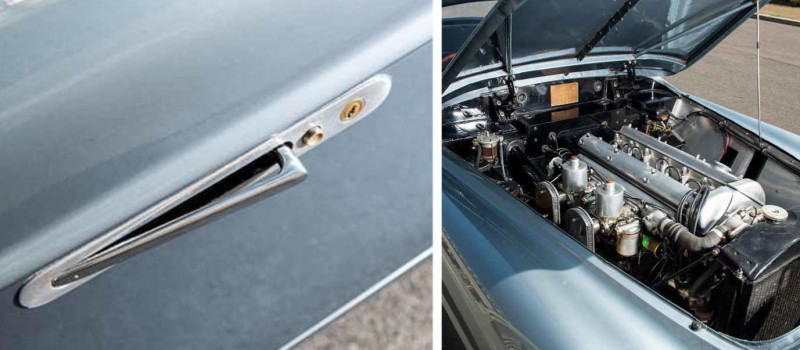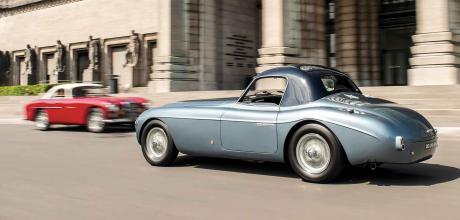1952 Jaguar XK120 Joska Bourgeois and Martial Oblin two Belgian coachbuilt examples
Sir William Lyons didn’t have the monopoly on making the most stylish Jaguar XK120, as these Belgian coachbuilt examples prove.
Words Johan Dillen
Photography Dirk de Jager
JAGUAR XK120 SPECIALS
Meet the stars of the 1952 Belgian Auto Salon
BELGIAN-BODIED JAG XKs — TWO RADICAL TAKES ON A BRITISH BEAUTY
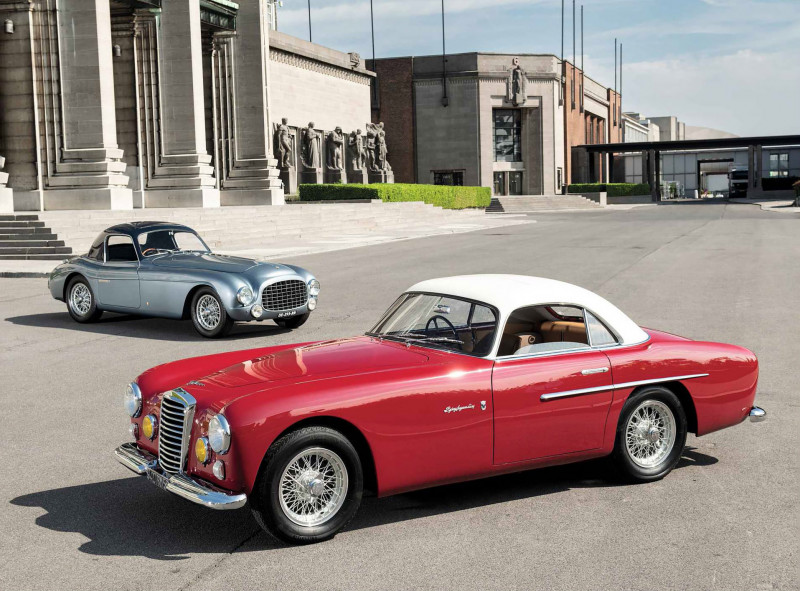
Back in 1952, these two special coachbuilt Jaguar XK120s were wheeled across the very avenue in Belgium where we’re standing today. In fact, they were pushed into these exhibition halls, ready for their grande premiere at the Brussels Auto Salon. This is the story of two extraordinary one-off Jaguars.

Jaguar and Belgium have always had a special relationship. There are the Jabbeke speed records, of course, but there was always the Belgian Iron Lady as well. We are talking about Joska Bourgeois, the driving force behind the Belgian Jaguar operation. After World War Two she walked up to the home of Jaguar founder Sir William Lyons and demanded the right to sell his cars in her home country. She wasn’t someone who would take no for an answer. Reportedly, Lyons would conduct business with only two women. The other was his private secretary...

Bourgeois showed unbridled ambition. At the time, British companies were allowed only to trade with Commonwealth partners, a problem Bourgeois solved through a partnership with a Canadian pilot she had befriended, resulting in the creation of Jaguar Car Distribution Ltd. Bourgeois fully understood the publicity value of motor shows and made sure she always had ‘new Jaguars’ to show. At first, she had thrown the Belgian coachbuilder Van den Plas a lifeline by having it assemble 3.5 Saloons from knocked-down kits, in order to profit from lower import taxes. In 1948, for instance, she had presented a two- seat convertible Van den Plas based on an unsold 1939 SS100 chassis, and a convertible version of a 3.5 limousine.
For the Van den Plas family, such efforts came too late: they closed up shop in Belgium in 1949. Only the British activities of Vanden Plas — note the spelling — would continue in the 1950s, under Austin ownership at first.
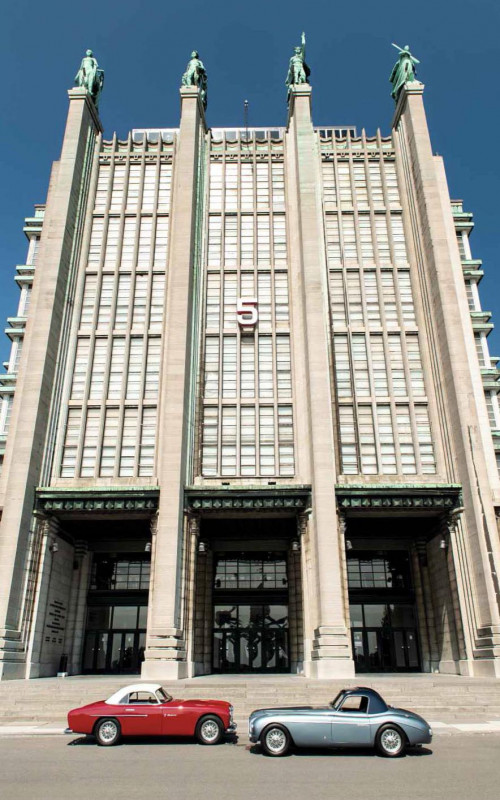
But for Bourgeois, this was merely a starting point. She had an excellent relationship with the racing community throughout Europe — Stirling Moss was present at the 1949 Brussels motor show unveiling of the XK120. One of her racing pals was the first Formula 1 world champion, Nino Farina, also a client. After a dinner following the Belgian Grand Prix in June 1951, Bourgeois complained to the victorious Farina, telling him how she thought Jaguars portfolio was missing products and how Lyons turned a deaf ear to her requests. Farina politely pointed out that he might have a solution through his father’s Italian coachwork business, the Turin-based Stabilimenti Farina.
With an unveiling at the 1952 Brussels show in mind, Bourgeois contracted Stabilimenti Farina to coachbuild three special Jaguars. Lyons gave the green light for the project and sent three donor cars to Turin. Two were based on the MkVII: the four-seat Meteor Jaguar Coupe and Golden Arrow Jaguar Cabriolet. The third you see here: the Flying Jaguar Coupe is a roomier two-seat interpretation of the XK120, its launch coming just months after the XK120 Fixed Head Coupe.
All three ‘Jaguar-Farina’ models received a similar frontal treatment. The Flying Jaguar Coupe differs with its chrome strip accentuating the rear wheelarch instead of the front. It is sensual and elegant, though quite a departure from the classic XK120 theme: the curvaceousness of the original has made way for a more linear approach. Its similarities with the Siata Daina, bodied by Stabilimenti Farina around the same time, are unmistakeable.
Unfortunately the project turned into a spectacular fiasco. When Joska Bourgeois presented the cars on the Jaguar stand in 1952 she had hoped to sell 50 of each, and sent out invitations to potential clients. But interest was lacklustre. Only the Flying Jaguar Coupe and the Golden Arrow Jaguar Cabriolet sold. None of the other importers wanted to support the project, so they remained one-offs. Bourgeois sold the Meteor to racing driver Lucien Bianchi, with a big discount.
The other car here also made its first appearance at the same venue in Brussels in 1952, even if it was not on the Jaguar stand.
‘With the 1952 Brussels show in mind, Bourgeois contracted Stabilimenti Farina to coachbuild three special Jaguars’
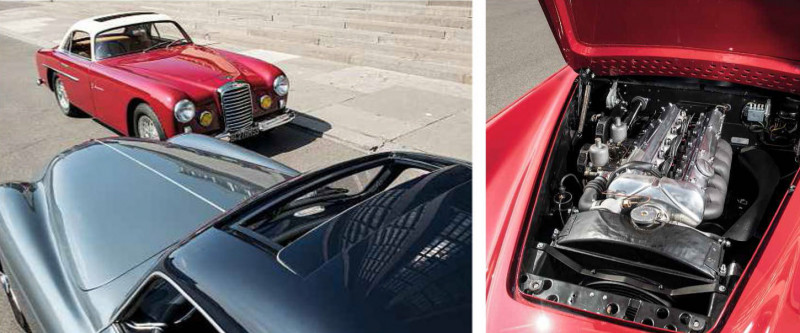
Opposite page and right Stabilimenti Farina created the Flying Jaguar Coupe as a more spacious version of the fixed-head XK120, powered by the same classic straight-six.

Left Two takes on the Jaguar XK120, both a result of the efforts of Belgian Jaguar importer Joska Bourgeois, now revisiting the Brussels Expo site of their debut, more than 70 years on.
It had actually been in existence for some time already, based upon one of the reserve lightweight XK120 chassis — number 660751 — that had been set aside for the Le Mans 24 Hours in 1951 but never used.
Belgian racing driver Jacques Herzet bought the chassis in 1951 through Joska Bourgeois, and sent it to Brussels coachbuilder Martial Oblin to receive new bodywork, all-aluminium like the Stabilimenti Farina XK. His motivation is unknown, but the parties involved decided on a style led largely by that of the Ferrari 195 Inter but with a unique interpretation of its tail. The car also gained a small, fixed roof.
Herzet, assisted by Georges Baudouin, drove the ‘Jaguarri’ to a terrific second place in the gruelling 1951 Marathon de la Route, from Liege to Rome and back. He had to bow his head only to Johnny Claes, with Jacques Ickx (father of Jacky) in the co-driver’s seat, who took the win in ‘HKV 500’, previously the 1949 Jabbeke record car. Herzet continued to race his Oblin Jaguar, finishing 38th in the 1952 Tour de France Auto, assisted by a young Lucien Bianchi. He later graduated to a Ferrari 166 MM, which also wore Oblin styling.
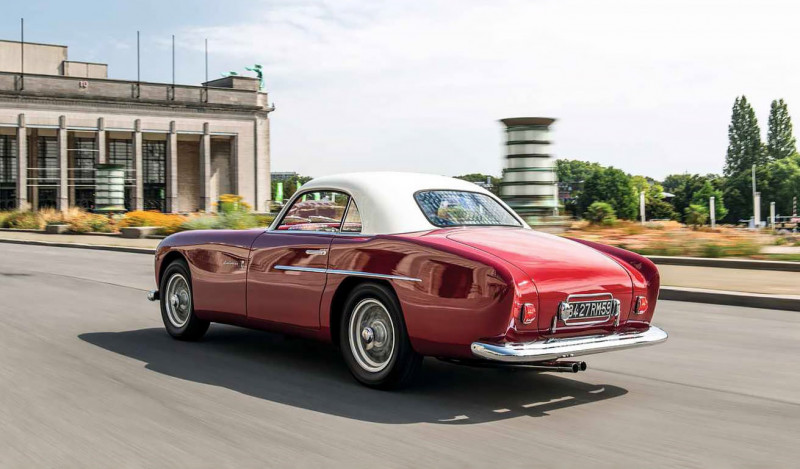
Both cars remained one-offs. In the case of the Oblin XK120, that was to be expected, but hopes had been higher for the Flying Jaguar Coupe. And now, more than 70 years since they appeared on the show stands at the Brussels Auto Salon, here they are for the first time again at the historic Heysel palais.
When these buildings were inaugurated in 1935, they marked a shift in ambitions for the tiny kingdom of Belgium. With Brussels as the stage of the 1935 World Expo, the newly erected buildings were meant to make a lasting impression upon visitors. Architect Joseph Van Neck gave the grounds a fitting look and feel, honouring the Art Deco movement of the time. The four statues over the entrance represent modes of transport: by ship, horse, steam engine and air. By the 1950s, the Heysel exhibition ground had hosted most of the major trade shows in Belgium, including the motor show, traditionally held in January.
Both these special Jaguars have had a long history since they were on show here. The Flying Jaguar Coupe was delivered to a Belgian owner, Georges Demerbe, in March 1952. The car stayed with his family until 1985, but had become neglected. This is made clear in the accompanying letter from Demerbe s son to the new owner, Jean-Louis Lombaerts. Chassis 660922 is clearly described as epave — a wreck. Two years on, Lombaerts put it up for auction.
It was restored during French ownership, but not to the exact specifications it had at the show in 1952. ‘We have recently finished the restoration for the current owner,’ Belgian specialist Bernard Marreyt explains. ‘This was a six-month process, starting at the end of 2021.
We went back to the bare aluminium and found traces of the original paint, so we knew what result we needed to achieve. We got it back to exactly the right shade it wore when it was new. The sidelights at the front are new. We had them remade in Italy, based on what we found in old photographs from 1952. Somebody had the original lights replaced by rounded ones. The dashboard had been covered in leather; we brought that back to the original appearance as well.’
The Oblin Jaguar led a similarly hard life, becoming unroadworthy though remaining complete until, as Marreyt explains, ‘It was the subject of a restoration in the hands of Francois Cointreau in France.’ Both XKs have retained their original engines and both stand in front of us, shining like show cars. The Flying Jaguar Coupe is the most interesting concept, offering a much roomier cabin. The rev-counter and the speedometer retain their original positions, but the smaller dials have been rearranged towards the top of the instrument cluster.
We take the Oblin XK for a short drive. Out of habit, you try to wriggle your legs between the seat and the steering wheel — until you remember that is not how things work in an XK120. So, you adapt to the wide-legged driving position, one leg each side of the steering wheel. The 3.4-litre straight-six provides plenty of torque for a smooth getaway and growls its encouragement as you apply more throttle. This Belgian Jaguar is still capable of strong acceleration, eager to display the racing character embedded in its DNA.
The gearchange is short and effortless; moving through the ratios feels slicker and better than in a new car. In the corners, though, it’s a different matter. Here it demands a strong grip on the steering wheel as your body starts to slide around in the seat, and there is some body roll to cope with as well. But none of this matters, as you are behind the wheel of a unique car, one that proved itself on a gruelling rally when it was new.
The Stabilimenti Farina coupe adds a more useful boot and some extra luggage space behind the front seats. But even in the Oblin, you are surprised to find a bit more headroom and shoulder room than you would in a regular XK120 FHC, something you would no doubt appreciate on longer drives, and which would certainly have helped Jacques Herzet on the Marathon de la Route.
‘Oblin also made the front wider,’ Marreyt explains. ‘That not only solved the cooling problems the early XKs suffered from, it also made it easier to work on for the mechanics.’
The Oblin XK120 will forever be something of an oddity, even if its two-tone body gives it a certain class. But it’s the Flying Jaguar Coupe that fixes your gaze for the longest: the longer you look at it, the more sense it starts to make.
In the end, it wasn’t to be. Stabilimenti Farina would not be the only Italian coachbuilder hammering away on an XK chassis. Pininfarina, Boano, Michelotti, Bertone, they would all give it a go, but not one of them managed to make you forget about the original Jaguar styling. Which is rather unusual for Italian design, no?
THANKS TO Bernard Marreyt (marreyt.com) for bringing these two cars together, and to Brussels Expo for the location.
‘The 3.4-litre straight-six provides plenty of torque for a smooth getaway and growls its encouragement’
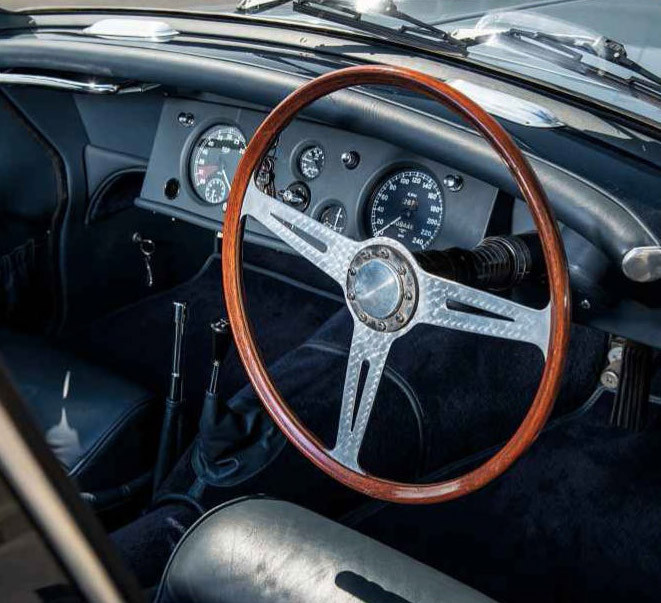
Right and below Brussels-based Martial Oblin styled and built the silver-blue XK120 for Belgian racer Jacques Herzet, inspired by the Ferrari 195 Inter.
